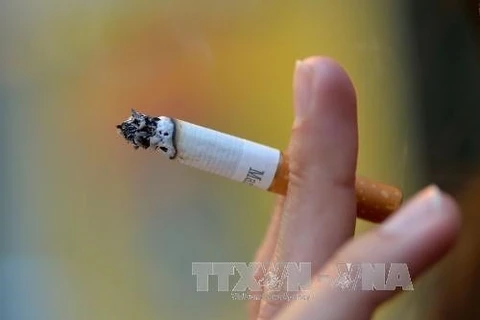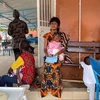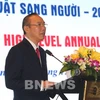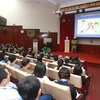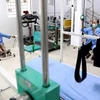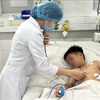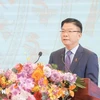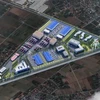HCM City (VNA) – More than 45 percent of Vietnamese males smoke tobacco, as heard at an anti-smoking conference held in Ho Chi Minh City on April 19.
The Ministry of Information and Communications in collaboration with Health Ministry’s fund for tobacco harm prevention and control co-organised the event.
At the conference, Pham Thi Hoang Anh, Country Director for Vietnam at the HealthBridge Foundation of Canada, said the number of local smokers saw a significant amount of poor people, adding that needy families spend up to 5.3 percent of their incomes on tobacco.
Vietnamese often begin smoking at young ages, she said, citing a 2015 statistic that showed about 56 percent of Vietnamese smoked before 20 years old.
According to the doctor, tobacco smoke consists of 7,000 harmful substances, including 69 causing cancer. It is estimated that 40,000 Vietnamese die every year due to smoking, and the number could increase to 70,000 in the future.
However, in Vietnam, in 2005-2016, when income per capita grew by 4.7 times, tobacco prices increased by only 2.2 times.
Nguyen Tuan Lam, from the World Health Organisation in Vietnam, said the low prices were a result of the country’s low tax on tobacco. The tax per retail price in Vietnam is about 35.6 percent, compared to the world average rate of 56 percent. The Vietnamese rate is also way below that of Thailand (73 percent), Singapore (66 percent), and the Philippines (63 percent).
As calculated, if tobacco tax goes up by 10 percent, tobacco consumption will go down by 4 percent in developed countries and 5 percent in developing ones, noted Lam.
Phan Thi Hai, deputy head of the fund for tobacco harm prevention and control, suggested reducing the rate of tobacco consumption in 2020, the Government need to increase the tax to at least 2,000 VND per tobacco pack in January 1 2020.
The Government should also adjust the tax based on consumer price indexes of following years to ensure tobacco prices are not well below income increases, Hai said.-VNA
VNA




